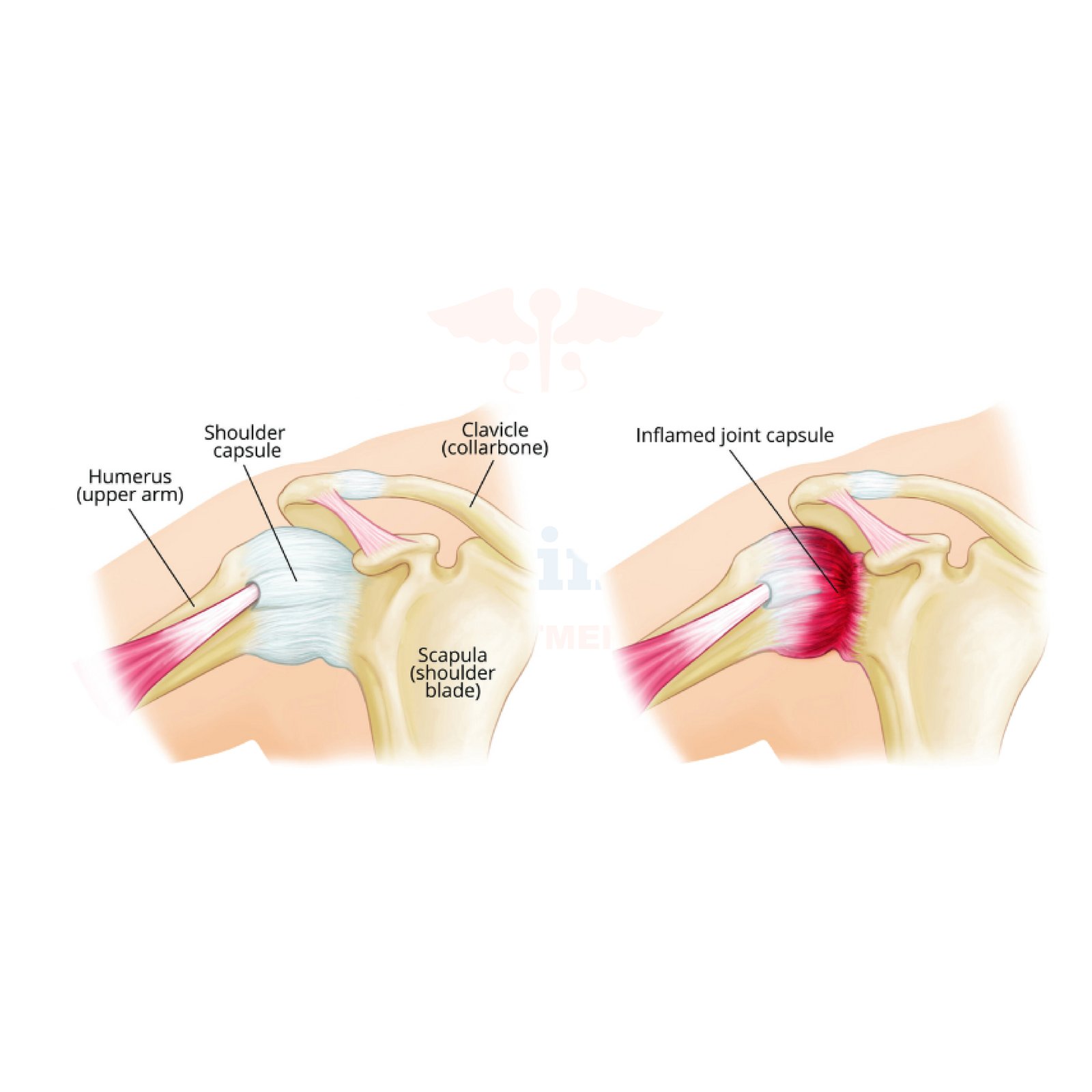Frozen Shoulder (Adhesive Capsulitis) Treatment in Germany
Frozen Shoulder, or Adhesive Capsulitis, is a painful and disabling condition characterized by stiffness and restricted movement in the shoulder joint. The condition develops when the connective tissue surrounding the shoulder joint thickens and tightens, leading to pain and limited range of motion. Frozen shoulder progresses gradually and can take months or even years to resolve if left untreated. Individuals aged 40 and older, especially women and those with underlying health conditions like diabetes or autoimmune diseases, are at a higher risk.
Germany is renowned for its cutting-edge medical treatments and world-class orthopedic care. Patients seeking treatment in Germany benefit from state-of-the-art hospitals, expert orthopedic specialists, and innovative therapies such as stem cell treatment, regenerative medicine, PRP therapy, and neurostimulation therapy, which accelerate healing and restore mobility effectively.
Types of Frozen Shoulder
Frozen shoulder typically develops in three distinct stages:
Freezing Stage:
Persistent pain in the shoulder, which worsens over time.
Gradual loss of range of motion.
Increased discomfort at night.
Frozen Stage:
Stiffness and significant restriction in movement.
Pain may reduce, but shoulder mobility remains severely limited.
Daily activities such as dressing or reaching for objects become challenging.
Thawing Stage:
Gradual improvement in shoulder mobility.
Pain subsides.
Full recovery can take months to years without proper treatment.
Risk Factors for Frozen Shoulder
Several factors contribute to the development of frozen shoulder, including:
Age and Gender: Most common in individuals over 40, particularly women.
Diabetes: High prevalence among diabetic patients.
Autoimmune Diseases: Conditions like rheumatoid arthritis increase susceptibility.
Obesity & High Body Mass Index (BMI): Excess weight contributes to joint stress.
High Cholesterol (Hyperlipidemia): Linked to musculoskeletal problems.
Post-Surgical or Injury Immobilization: Prolonged shoulder immobility after surgery or injury.
Thyroid Disorders: Both hyperthyroidism and hypothyroidism are risk factors.
Symptoms of Frozen Shoulder
Persistent shoulder pain.
Stiffness that worsens over time.
Limited range of motion, especially in lifting or reaching movements.
Difficulty sleeping due to shoulder discomfort.
Weakness in the affected arm.
Diagnosis & Diagnostic Tools in Germany
Germany offers some of the most advanced diagnostic tools for accurate assessment of frozen shoulder:
X-rays: To rule out arthritis or bone-related issues.
MRI (Magnetic Resonance Imaging): Provides detailed images of soft tissues and detects inflammation.
CT (Computed Tomography) Scans: Creates 3D imaging for complex cases.
Ultrasound: Identifies thickened joint capsules and fluid buildup.
Blood Tests: Helps diagnose underlying conditions such as diabetes or autoimmune diseases.
Treatment for Frozen Shoulder in Germany
Germany provides a wide range of traditional and innovative treatments for frozen shoulder, ensuring optimal recovery.
Conventional Treatments
Pain Relievers & Anti-Inflammatory Medications: Reduce inflammation and pain.
Physical Therapy: Exercises to restore motion and flexibility.
Corticosteroid Injections: Provide pain relief and reduce swelling.
Hydrodilatation: Injecting sterile fluid into the joint capsule to stretch it and improve movement.
Surgical Treatments
Shoulder Manipulation Under Anesthesia (MUA): The joint is moved forcibly under anesthesia to break up adhesions.
Arthroscopic Capsular Release: A minimally invasive surgery to cut tight portions of the joint capsule.
Innovative Therapies in Germany
Germany excels in advanced treatments for frozen shoulder, including:
Stem Cell Therapy: Regenerates damaged tissues and accelerates recovery.
Platelet-Rich Plasma (PRP) Therapy: Uses the body's growth factors to promote healing.
Neurostimulation Therapy: Reduces chronic pain by modulating nerve signals.
Regenerative Medicine: Aids in joint tissue restoration.
Extracorporeal Shockwave Therapy (ESWT): Uses sound waves to stimulate healing.
Laser Therapy: Reduces inflammation and pain while improving tissue healing.
Why Choose Germany for Frozen Shoulder Treatment?
Germany is a leading destination for frozen shoulder treatment due to:
Highly Experienced Orthopedic Specialists: Doctors in Germany are globally recognized for their expertise.
State-of-the-Art Hospitals: Equipped with modern medical facilities and technology.
Personalized Treatment Plans: Tailored rehabilitation programs for each patient.
Access to Cutting-Edge Therapies: Availability of regenerative medicine and stem cell therapy.
Medical Tourism Services: Germany provides seamless assistance for international patients.
Solutions & Prevention of Frozen Shoulder
Preventive Measures
Regular Shoulder Exercises: Prevents stiffness and improves flexibility.
Maintaining a Healthy Weight: Reduces strain on joints.
Timely Treatment for Shoulder Pain: Prevents the condition from worsening.
Post-Surgery Rehabilitation: Ensures mobility recovery after surgery.
Proper Ergonomics & Posture: Minimizes shoulder stress in daily activities.
Complementary Therapies for Recovery
Chiropractic Care: Improves joint function and alignment.
Massage Therapy: Reduces muscle tension and increases circulation.
Acupuncture: Relieves pain and inflammation.
Hydrotherapy: Water-based exercises that facilitate mobility.
Yoga & Stretching: Enhances flexibility and reduces stiffness.
Conclusion
Frozen shoulder is a challenging condition that significantly impacts daily life, causing chronic pain, stiffness, and restricted movement. Seeking treatment in Germany offers patients access to top-tier medical facilities, innovative therapies, and specialized rehabilitation programs that ensure effective recovery. With cutting-edge options like stem cell therapy, PRP therapy, neurostimulation, and regenerative medicine, patients experience faster and more successful outcomes compared to conventional treatments.
By recognizing risk factors, adopting preventive measures, and seeking early medical intervention, individuals can regain full mobility and lead a pain-free life.
👉 Contact us for further information and receive a complimentary consultation.

.webp)
.webp)
 (1).webp)
 (1).webp)

.webp)
.webp)
 (1).webp)
 (1).webp)
